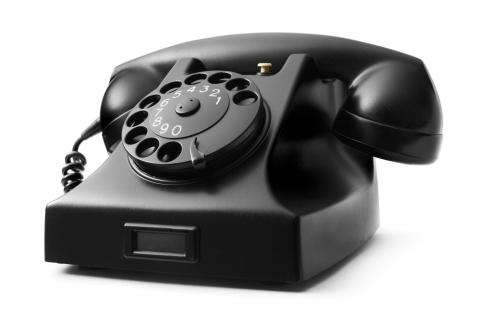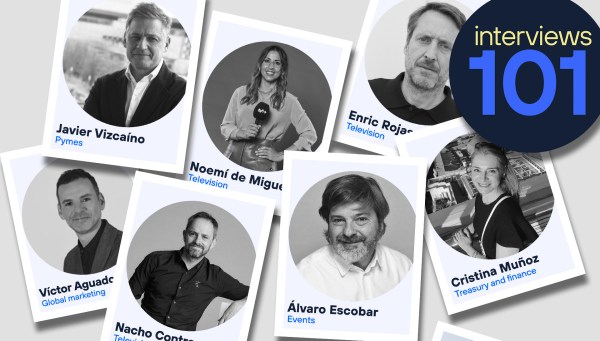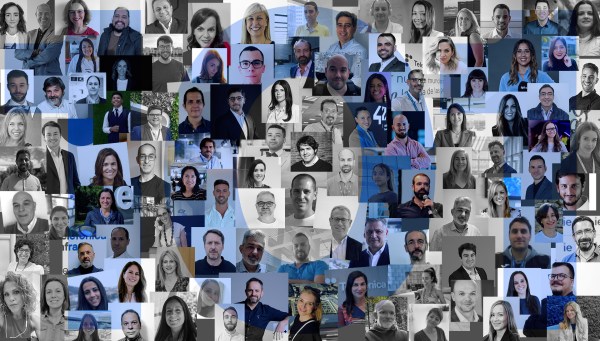Tell us a little about yourself. What does your job at Telefónica involve?
I’m a sports journalist and one of the faces of Movistar Plus+. Every Monday, you can see me presenting El Día Después, the longest-running programme on television, which offers a very different take on La Liga matches.
I’m especially happy to be part of its relaunch and to see how the stories that the editors capture and that we promote add to the bond between players, coaches, clubs and fans.
I also present La Previa for Champions League matches from the pitch, trying to bring what’s happening to the viewers and make them feel like their sofas are almost like seats in the stadium. In addition, I’m the leader of the Sports Agitation Table in this two-way initiative that has a lot to do with business and knowledge of the new audience.
What does having a platform like Movistar Plus+ mean for the world of sport?
THE INFINITE STADIUM. I don’t think I need many more arguments to highlight what Movistar Plus+ means for sport, not only nationally, but also internationally for audiences in Spain.
The rigorous and professional treatment we receive thanks to our experience, philosophy and recognition as a genuine way of reporting on sport. In addition to being fully aware of our role as a mouthpiece and amplifier for those sports that do not get coverage because they are not followed by a large audience. The same goes for their protagonists, whose stories we tell in documentaries, interviews or reports.
What does technological progress bring to the world of sport?
We are seeing generations of athletes breaking records that have stood for years in their disciplines. And we owe that to technology and the science that applies that technology. Data analysis is a key factor. But so is the study of the body and metabolism of athletes for those improvements that give tenths of a second in speed or performance in terms of nutrition and energy for their performance, healing or injury prevention, and a long list of other factors.
And what about sports broadcasting?
Agility, reach and a significant contribution to the quality we can bring to viewers in their homes. We are storytellers, and anything technology can do for us in terms of streamlining and improving communications, reducing processes and enhancing our work is more than welcome.
From a more personal perspective, how does the work of a sports journalist change depending on whether it is done from a studio or at the stadium or track where the sporting events take place?
I do most of my work on a mobile device: searching for information, checking facts, communicating with colleagues, managing my schedule and contacting athletes and clubs, using the media’s social media and my own to amplify our work… That doesn’t change.
The big difference is the comfort of a studio, a predictable environment. Or the uncertainty of being outside. But that’s the spark of this profession. Being where things happen is the best thing that can happen to a sports journalist, being a direct witness and being able to narrate the great milestones in sport.
I’ve worked in F1 all over the world and during a storm that never ended, the live broadcast was extended and I enjoyed myself like a little girl, literally pulling world champions out of their comfortable hospitality areas to talk to them. Or I snuck into McLaren’s pit while waiting for the stewards’ decision so I could announce Carlos Sainz’s first podium finish. Without the trust I built up there as a professional, it wouldn’t have been possible to bring moments like those to life for the audience.
What are the pros and cons of each of these professional profiles?
Having more or less contact with the real protagonists of our work, who are the athletes. That’s the big difference.
In a world like sports journalism, where men still make up the majority, what advice would you give to young female journalists who want to pursue this branch of the profession?
Prepare yourselves well. Fortunately, many other female professionals have paved the way and the way we are viewed has changed. Even so, you have to know that you will have to prove yourselves many more times and listen to the difficulties you will have to overcome to be able to make a living from it. But dedication, effort and professionalism are rewarded.
Which people working at Telefónica would you nominate for this interview because you consider them to be excellent at their job?
I have worked with great professionals, I could make a long list. And as I know how schedules work, I will suggest several names:
Enric Rojas, so you can get to know the head of sports at Movistar Plus + and the challenges we are so eager to tackle.
Javier Vizcaíno, director of the SME Business Unit, for being key to the driving force of the Spanish economy, which is small and medium-sized enterprises.
Esther Funes and Rosana Fiérrez del Campo, from the B2B Sales Academy, for their commitment to innovative and truly useful training for the continuous development of employees.
Álvaro Escobar, head of B2B events, because with him and his team I have learned a lot about who we are and increased my sense of belonging.







